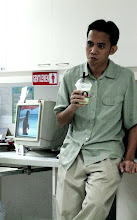In some way, J&J applies their target marketing in the
The seemingly segmenting marketing strategy of J&J touched the factors particularly demographic, economic and mostly political and legal factors. It has been probably assessed that there is sufficient demand in the market for a cheaper product that could satisfy the currently untapped young female market. With the 1989 political condition, there were no enormous entrant and exit barriers since the government needs investments that could emphasize a central role for foreign enterprise.
Economy of the
Having the customs of having the mother as the decision maker in shopping activities especially when it concerns to facial and health care for the family, this kind of convenience products appear to be sold effectively in supermarkets. It was found out that Johnson’s Baby Powder among teens and young adults was much lower than that of mothers. Also, 80% of the chosen class stated that they applied it to their face. This also opened the idea that “Filipino young people are no different than their counterparts in many other countries. They want to put distance between themselves and their childhood on some dimensions…” Knowing that there was strong interest among female teens and young adults in J&J baby powder they come up with research-based findings which conclude that the behavioural factor is strongly inviting them to capture the target audience based on their customary usage.
The age distribution of Philippine Population in 1989 aids the J&J Company to forecast their potential buyers based on the percentage of population per age. The age bracket also helps them identify the percentage of target audience that possess particular consumer knowledge, attitude, use or response to their product.






1 comment:
your such a blessing. your write-ups help me decide what's my conclusion to the said problem.
Thanks!
Post a Comment